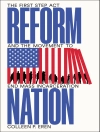Sophie Body-Gendrot How much related are present and past violence? The answers are complex due to the limited knowledge scientists have gathered, even after spending a life-time studying this very enigmatic and most serious social phenomenon called violence. All authors agree that the present level of interpersonal violence cannot be sufficiently understood without taking the earlier long-term decrease into account. Ted Robert Gurr (1981, 1989) was one of these pioneers who und- took a statistical overview of the development of homicides from the Middle Ages to the present, looking at England in particular. On his curve, 20 ho- cides per 100, 000 inhabitants were recorded in the High and Late Middle Ages and one case in the twentieth century put an end to the curb. Gurr interpreted this long-term decrease in interpersonal violence as ‘‘a manifestation of cultural change in Western society, especially the growing sensitization to violence and the development of an increased internal and external control on aggressive behavior’’ (Gurr, 1981:258). Currently, both the present and the past have to be considered in any attempt to answer the following questions: is the higher incidence of violence which still prevails a temporary exception or a new trend related to structural dynamics of modern societies? In which regions of Europe is it more specifically pronounced? More generally, this volume claims that historical knowledge of changes in violent behavior and of violence forms an indispensable contribution to an understanding of the manifestations of violence in contemporary societies.
表中的内容
Contested Definitions.- Violence: Reflections About a Word.- Violence as an Essentially Contested Concept.- Long-Term Trends.- Homicide in Scandinavia: Long-Term Trends and Their Interpretations.- Violence in France’s Past: An Anthropological Approach.- The Fall and Rise of Homicide in Ireland.- Contemporary Trends.- Violence in Present-Day France: Data and Sociological Analysis.- From Old Threats to Enigmatic Enemies:The Evolution of European Policies from Low Intensity Violence to Homegrown Terrorism.- Gendering Violent Practices.- The Language of Violence: Symbolic Body Parts in Marital Conflicts in Early Modern France.- Negotiating Violence and Gender: Security and the Night Time Economy in the UK.- Politics, War and Violence.- Violence and War: Measuring Homicide in Belgium (1900–1950).- Democratization and Violence: European and International Perspectives.- Violence and Violence-Control in Long-Term Perspective: ‘Testing’ Elias in Relation to War, Genocide, Crime, Punishment and Sport.
关于作者
With a Ph.D. in political science from the Institut d’Etudes Politiques and a B.A. and M.A. in American Studies from the University of Paris-Sorbonne, Sophie Body-Gendrot is a Professor of Political Science and of American studies at the Sorbonne, Paris. She founded the Center for Urban Studies (CEUMA). She is a researcher at the Centre de recherche sociologique sur le droit et les institutions pénales (CNRS-CESDIP-Dept of Justice) and an expert for the program Urban Age at the London School of Economics on safety and public space. She is also a member of the French Civilian Police Review Commission. She has wrote or co-edited more than fifteen books and over a hundred articles. The most recent works related to urban violence and public policies are La peur détruira-t-elle la ville? (Will Fear Destroy the City?); Violence in Europe (coedited with P. Spierenburg); Sortir des banlieues: Pour en finir avec la tyrannie des territories (Getting Out of Inner-cities: Putting an End to Territorial Tyranny); Police et discriminations raciales: Le tabou français; La société américaine après le 11 septembre?; Villes: La fin de la violence?; The Social Control of Cities; Villes et violence; and a chapter in The Endless City called ‘Confronting Fear.’












